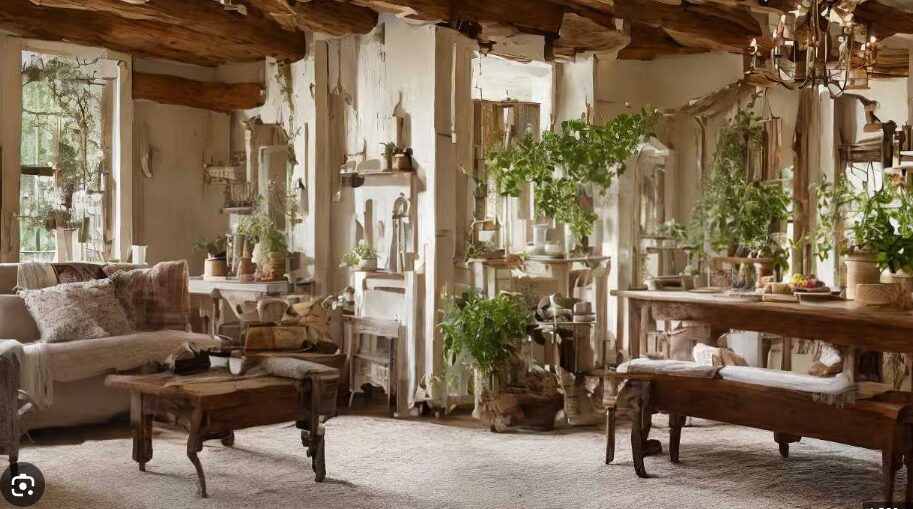Table of Contents
- Introduction to European Aesthetics
- Embracing Classic Designs
- Blending Old-World Charm and Modern Sensibility
- Critical Elements for Transformative Interiors
- Architectural Influences in Modern Spaces
- Common Myths About European Style
- Tips to Incorporate European Elegance
- Conclusion: A Journey to Timeless Beauty
Introduction to European Aesthetics
European aesthetics exude a timeless elegance that commands admiration and invites one into a world of refined beauty. These styles bridge the historical and modern, allowing individuals to create stunning environments that reflect tradition and current design sensibilities.
The allure of European design lies in its versatility and depth, offering a tapestry of styles that resonate across cultures. Whether drawn to the rustic charm of a French café or the clean lines and minimalist charm of Scandinavian interiors, integrating these varied elements into modern homes is easier than ever. This design philosophy thrives on the dualism of preserving legacy while embracing contemporary nuances. As one explores [infusing modern living with classic elements](https://www.architecturaldigest.com/story/transforming-home-design), the discoveries made along the way can transform ordinary spaces into their realm of cultural beauty and rich history.
Embracing Classic Designs
The world of classic European design embodies a delicate interweaving of history, art, and superior craftsmanship. From the use of opulent fabrics and textiles to the embodiment of regal and antique furniture pieces, these aspects resonate with the grandeur of yesteryears. Italy and France have played significant roles in nurturing these styles, offering rich textures and well-defined spatial compositions that mirror their vibrant cultural tapestries. Anyone looking to infuse their lifestyle with a touch of European flair, even practical considerations like auto repair Bellevue WA, can find solutions that blend functionality with style, underscoring the seamless integration of design and utility.
Understanding classic European design requires a deep appreciation for the narratives told through intricacies and craftsmanship. Each ornate piece carries with it tales of artisanship passed through generations. When integrated into the modern context, these quintessential designs reveal a harmonious balance between opulence and functionality—a synergy where beauty serves purpose.
Blending Old-World Charm and Modern Sensibility
Fusing old-world charm with modern sensibility often results in an exquisite yet practical living space. This design strategy involves pairing timeless fixtures with contemporary advancements, manifesting in alluring and highly functional homes. By acknowledging the past while embracing innovation, homeowners can create a fresh yet familiar ambiance that resonates at the core of many worldwide today.
Crafting such synergy embodies the spirit of evolvement within design—a realm where the juxtaposition of traditional and modern cues morphs into cohesive and inviting environments. This blend fosters a continual dialogue with the past, allowing new stories to unfold alongside historical narratives.
Critical Elements for Transformative Interiors
Achieving transformative interiors that capture the essence of European elegance necessitates an understanding of key design elements. This includes selecting appropriate color palettes, integrating textures with depth, and choosing furniture aligning with the envisioned aesthetic. Addressing these elements allows for creating harmonized spaces reflecting personal taste while staying true to classic elegance.
European palettes often favor softer, muted tones, invoking serenity and ambiance, whereas textures offer depth and intrigue. Furniture choices, ranging from antique to contemporary interpretations of a classic style, serve as bridges linking diverse eras within a singular space.
Architectural Influences in Modern Spaces
European architecture stands out through distinctive features such as curved arches, grand columns, and ornate moldings. These characteristics define historical spaces and continually influence modern designs and interiors. Incorporating such elements within contemporary housing imparts sophistication and traditional charm while promoting modern functional space utilization.
Designers are often inspired by these iconic architectural feats, ingeniously incorporating them into today’s spaces without sacrificing function or practicality. This creates an enduring visual impact that transforms homes into artsy, meaningful havens.
Common Myths About European Style
Surrounding European style are numerous myths that may hamper efforts to embrace its various elements. A prevalent misconception suggests that European design equates to clutter or overly ornate decorations, which diverts from its true essence. Genuine European aesthetics foster harmony and balance, underpinned by a commitment to exemplary craftsmanship and quality.
Another myth suggests prohibitive expense or difficulty in maintenance, often assumed to accompany European elements. While certain elements indeed project luxury, more budget-friendly alternatives that nonetheless ensure elegance and refinement are feasible.
Tips to Incorporate European Elegance
Introducing European elegance into your abode may begin with elementary tweaks. Incorporating antique or refurbished furniture infuses spaces with character and history, creating layers of storytelling within a modern setting. Exploring the richness of textiles—such as curtains or upholstery—further transforms a space. Seek additional [tips and inspirations](https://www.homesandgardens.com/interiors/how-to-transform-your-home) to expand your design vocabulary and craft an interior that tells a story.
Subtle applications of classic elements, like moldings or architectural details, also enhance spaces with a European-inspired ambiance, appealing visually while reinforcing timeless appeal.
Conclusion: A Journey to Timeless Beauty
Embarking on a journey to discover and incorporate European elegance melds historical charm with contemporary flair. Derived from a rich cultural melting pot, these aesthetics offer myriad transformative possibilities for modern living spaces. By acknowledging the fusion of tradition with innovation, individuals can create cultured, elegant, and enduring interiors.
Allowing your home to become a canvas for such timeless elegance ensures a reflection of personal tastes that goes beyond transient fashion trends. Understanding these designs opens avenues to appreciate the storytelling and craftsmanship intrinsic to European styles—crafting spaces that are beautiful and resonate on a deeper, more meaningful level.

